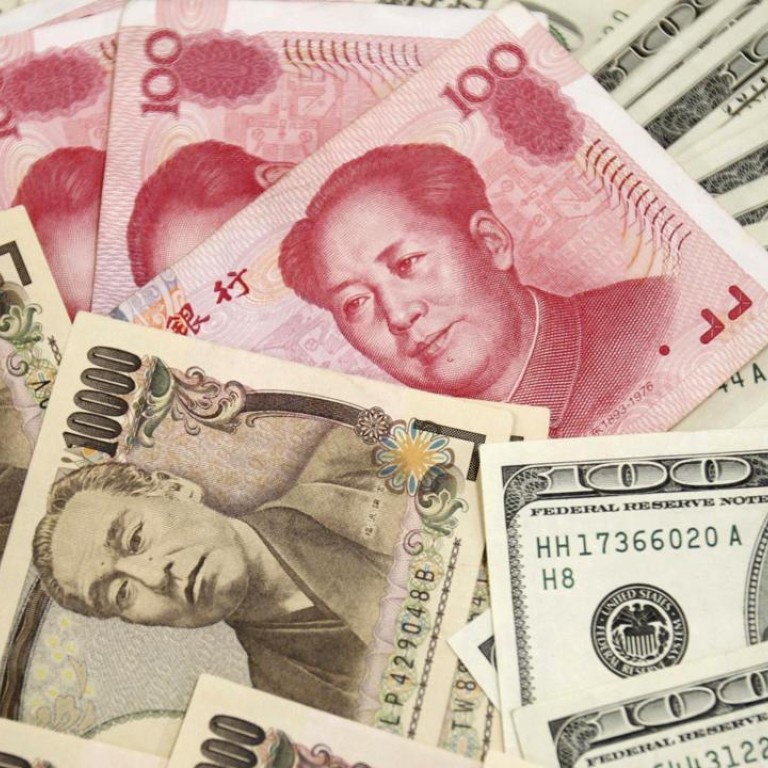
Japan’s negative rate policy may have far-reaching consequences not foreseen by BOJ
The Bank of Japan’s decision to adopt a negative interest rate policy will have domestic, regional and global consequences – but not necessarily the kind Japan’s policymakers might have in mind
The Bank of Japan’s (BOJ) January 29 decision to adopt a monetary policy of “quantitative and qualitative easing with a negative interest rate” (QQENIR) will have domestic, regional and global consequences but not necessarily the kind Japan’s policymakers might have in mind.
But what is clear is that the BOJ both intends, in its own words, “to maintain momentum toward achieving the price stability target of 2 per cent,” and that it also stands ready to go further if appropriate.
Japan’s banks have already begun to cut the deposit rates on offer, including on time deposits, although, at least for now, rates remain just above zero even though the BOJ’s new policy forces banks in Japan to pay minus 0.1 per cent on one tier of reserves posted with it.
Japan’s deposit-takers understand that if depositors are confronted with zero, or worse, negative nominal rates, cash can easily be withdrawn from the banks and either spent or invested in better yielding instruments, both of which would appeal to Japan’s policymakers, or hoarded at home.
But when the population is ageing, as is Japan’s, positive but derisory yields on deposits might encourage savers to save more and spend less. Savers might seek to stabilise their income stream from their savings by building up the size of their principal.
Additionally, if Japan’s depositors – and indeed its banks which will want to avoid the BOJ’s soon-to-be-imposed negative rate – seek higher yielding instruments, their options at home are limited with domestic yields so low.
Investing outside Japan is an alternative. That would likely involve exchanging yen for other currencies. A negative interest rate in Japan, at the least, should make the yen a less attractive currency to hold.
In that vein, in its press release, the BOJ alluded to similar negative interest rate schemes in Denmark, Sweden and Switzerland. It should be noted in passing that all of those three countries, to some degree or another, adopted a negative interest rate structure in order to make their local currencies less attractive.
Making the link between the currency and the BOJ decision, the Netherlands’ ING Bank concluded that “clearly trade-weighted [yen] strength proved more of an issue for the BOJ than we expected”.
“Trade weighted strength in the [yen] had been driven by the recent sell-off in Asian FX – particularly the [yuan] which has a 31 per cent weight in the [yen’s] trade weighted basket,” ING added.
Elsewhere in the region, Seoul can ill afford to see the yen weaken at the won’s expense.
The Japanese central bank’s move thus has implications for the yuan’s own direction of travel, especially with Beijing now targeting the value of China’s own currency against a basket of 13 others, a basket in which Japan’s yen has a 14.7 per cent weighting.
Consequently if the path for the yen to rise versus the yuan has been partially discouraged by the BOJ action, any further need for China’s currency to edge weaker might have to be manifested more against other major currencies such as the dollar or the euro.
Elsewhere in the region, Seoul can ill afford to see the yen weaken at the won’s expense.
South Korea has already seen its exports fall 18.5 per cent year-on-year in January.
With South Korea’s own consumer price index rising a below-forecast 0.8 per cent year-on-year last month, the Bank of Korea might be tempted to ease monetary policy itself when it meets on February 16, or at least signal a willingness to act.
Outside the area, ING has argued that Japan’s move has only increased the probability that the European Central Bank (ECB) will ease policy in March, but that the Japanese decision has made it even harder for the ECB to deliver policy changes sufficient, as a by-product, to weaken the euro.
Perhaps it is also no coincidence that on February 1, just days after Japan took the negative interest rate route, US Federal Reserve Vice Chairman Stanley Fischer chose to stress that there is no automaticity about further US rate increases and that “policy decisions will be data dependent”.
Clearly if the United States continues to increase rates while the BOJ adheres to a negative rate scheme as a policy tool, the dollar would likely soar anew versus the yen to the detriment of US manufacturers as a whole.
The Bank of Japan will have considered the wider implications of adopting a negative interest rate as part of their monetary policy but calculating how others react is unknowable.
As the Fed’s Fischer said at the start of this month, when looking ahead “all [that] monetary policymakers can really be sure of is that what will happen is often different from what we currently expect”.

